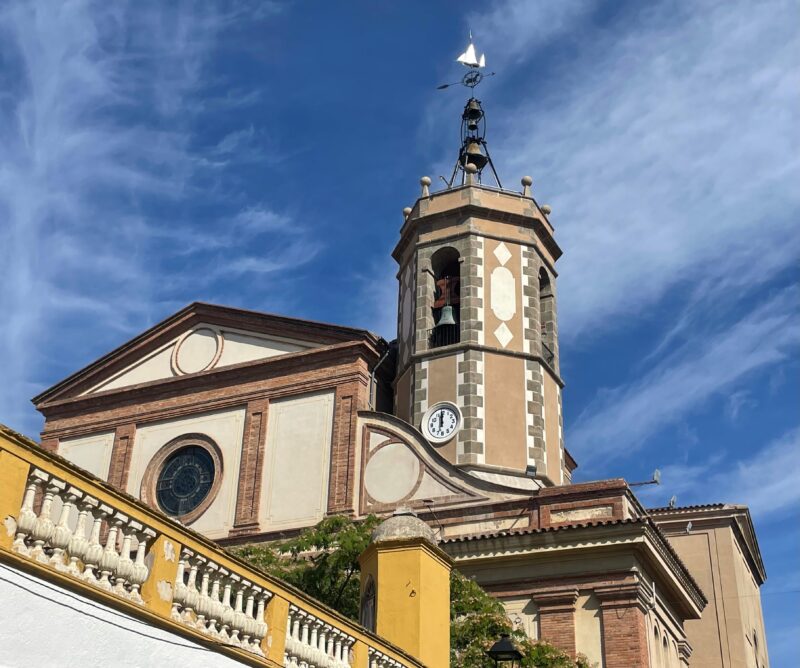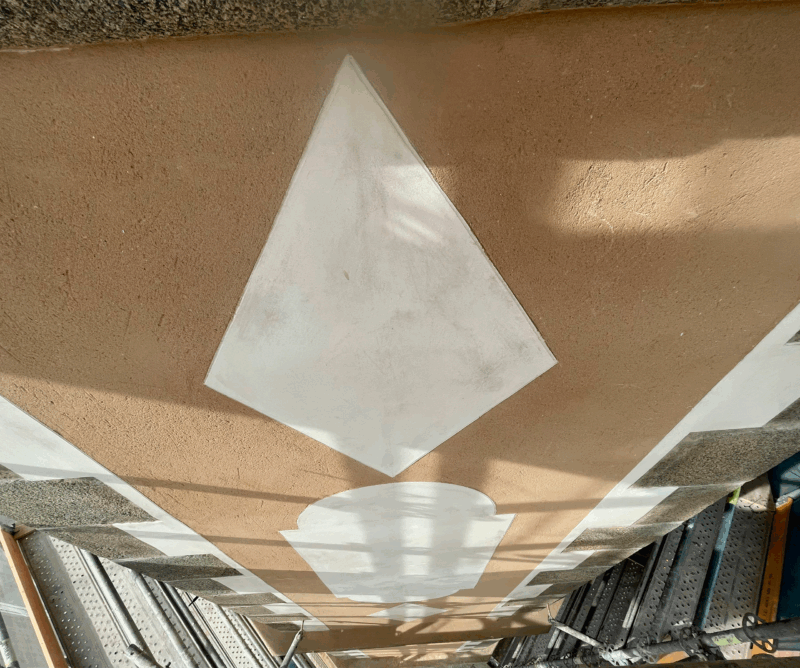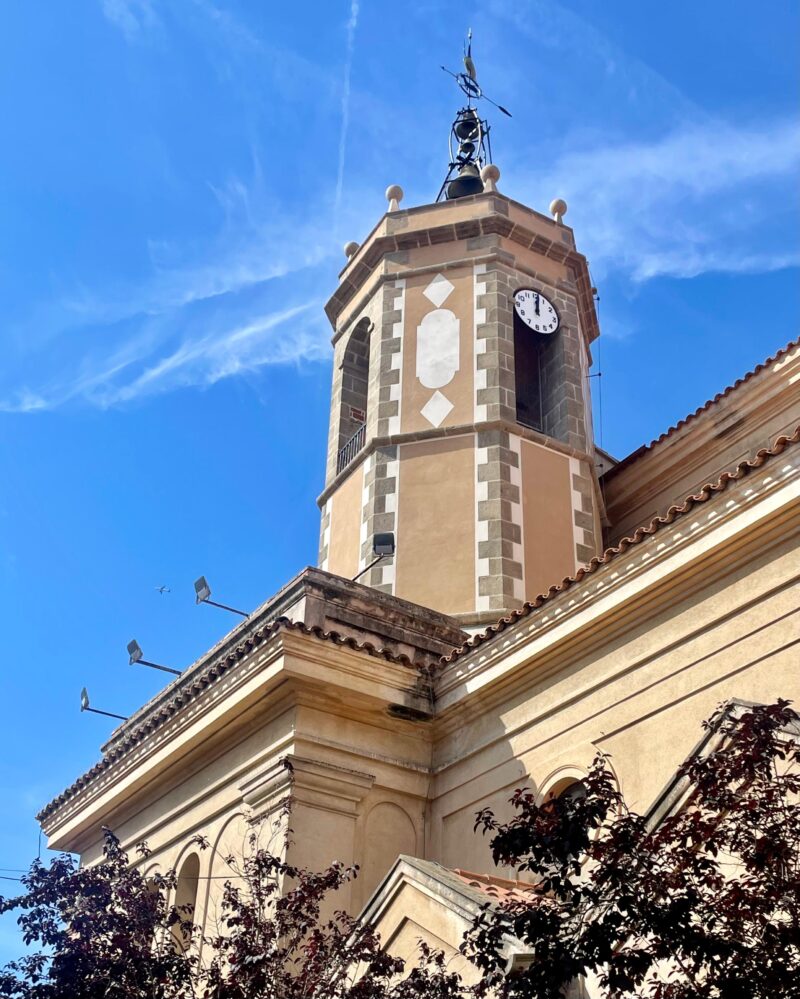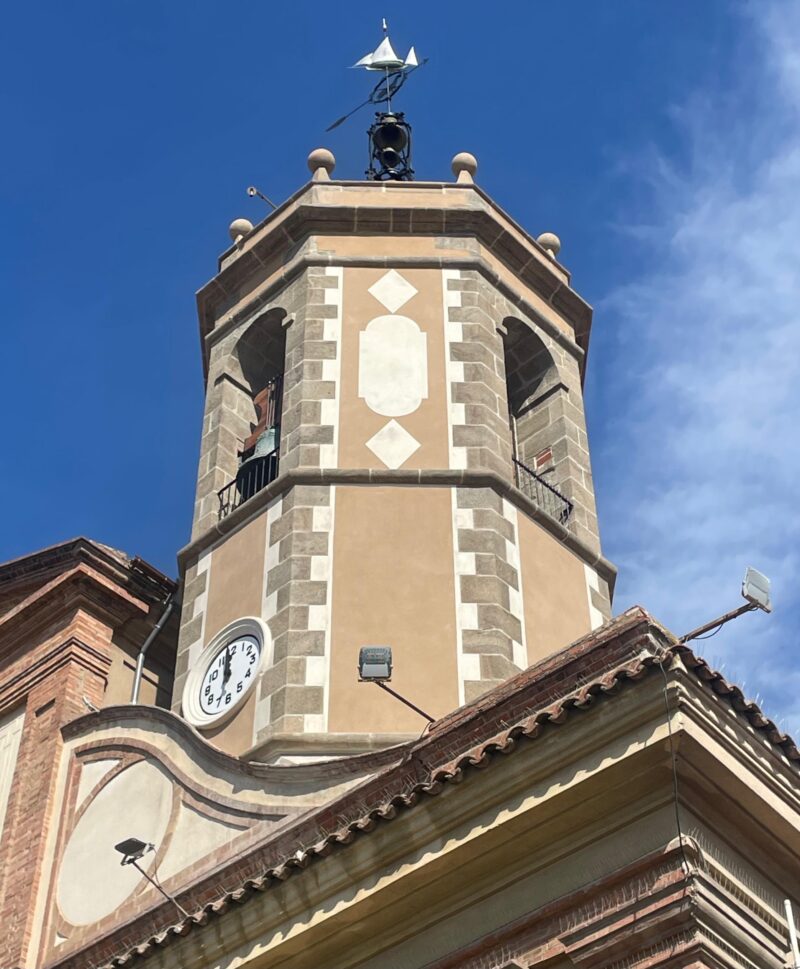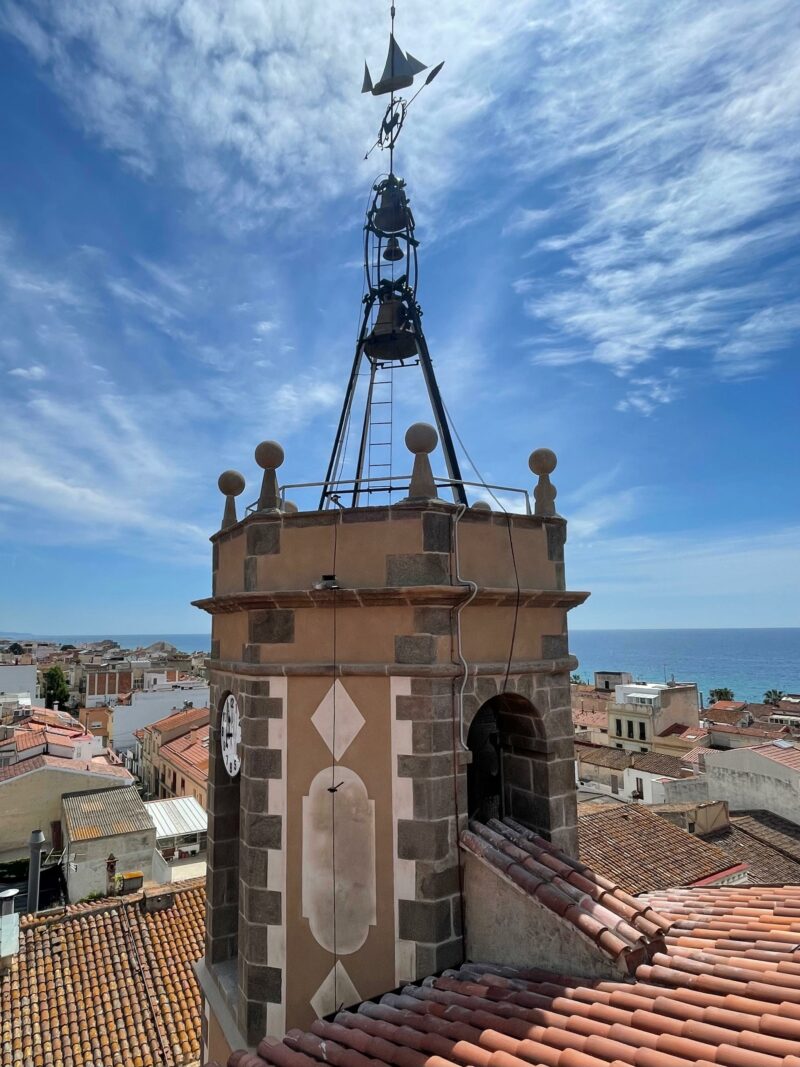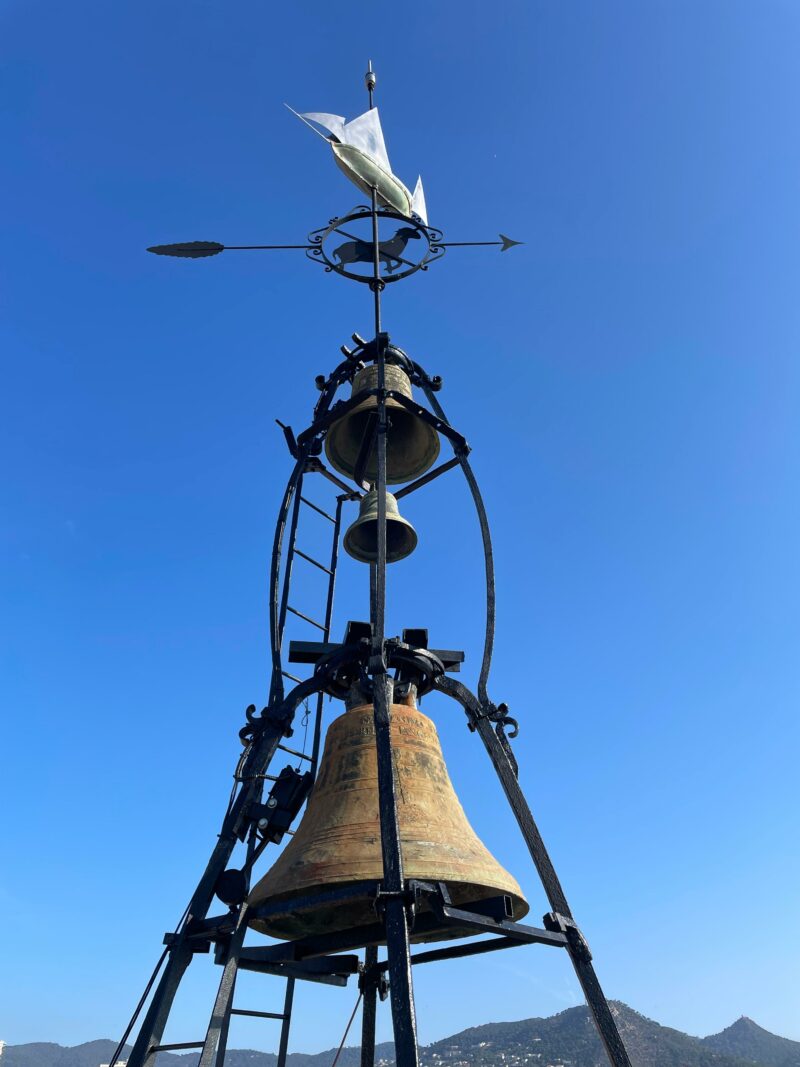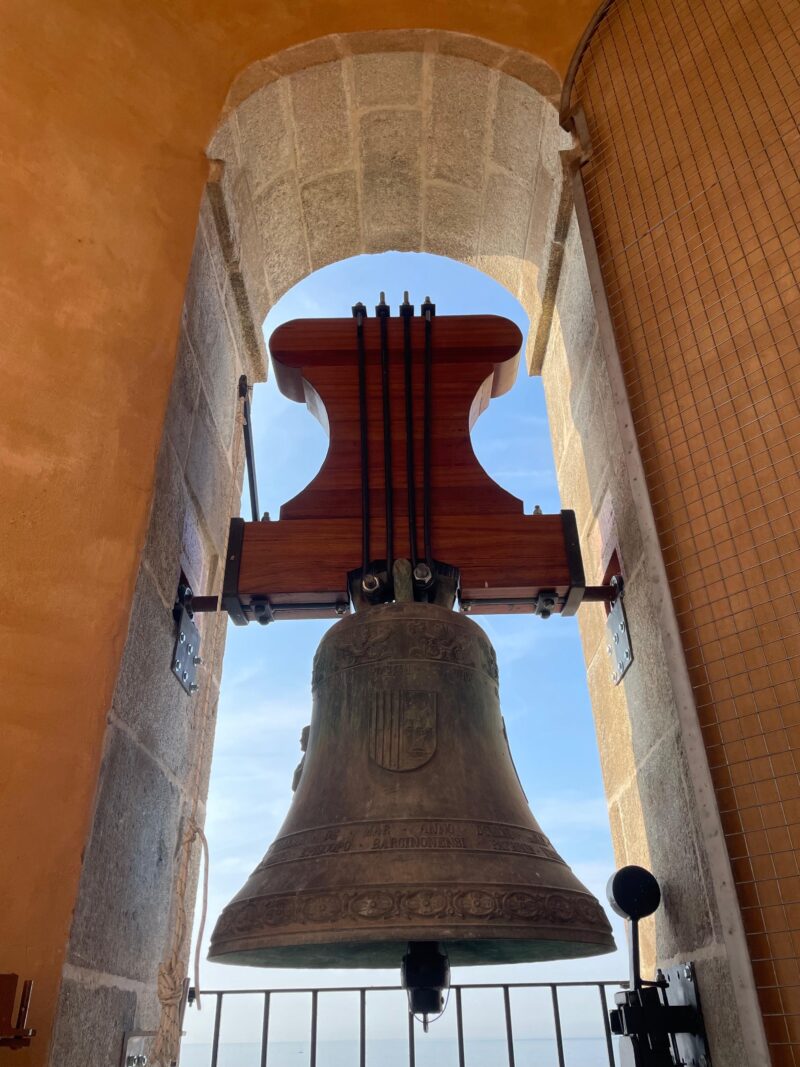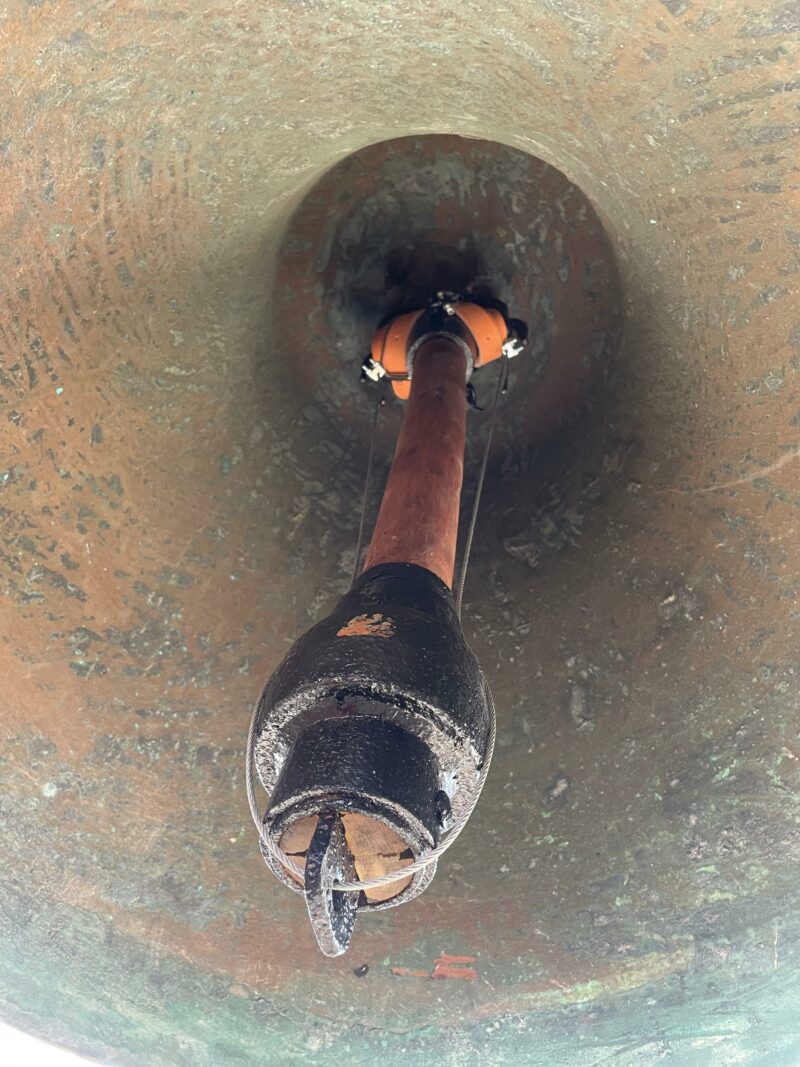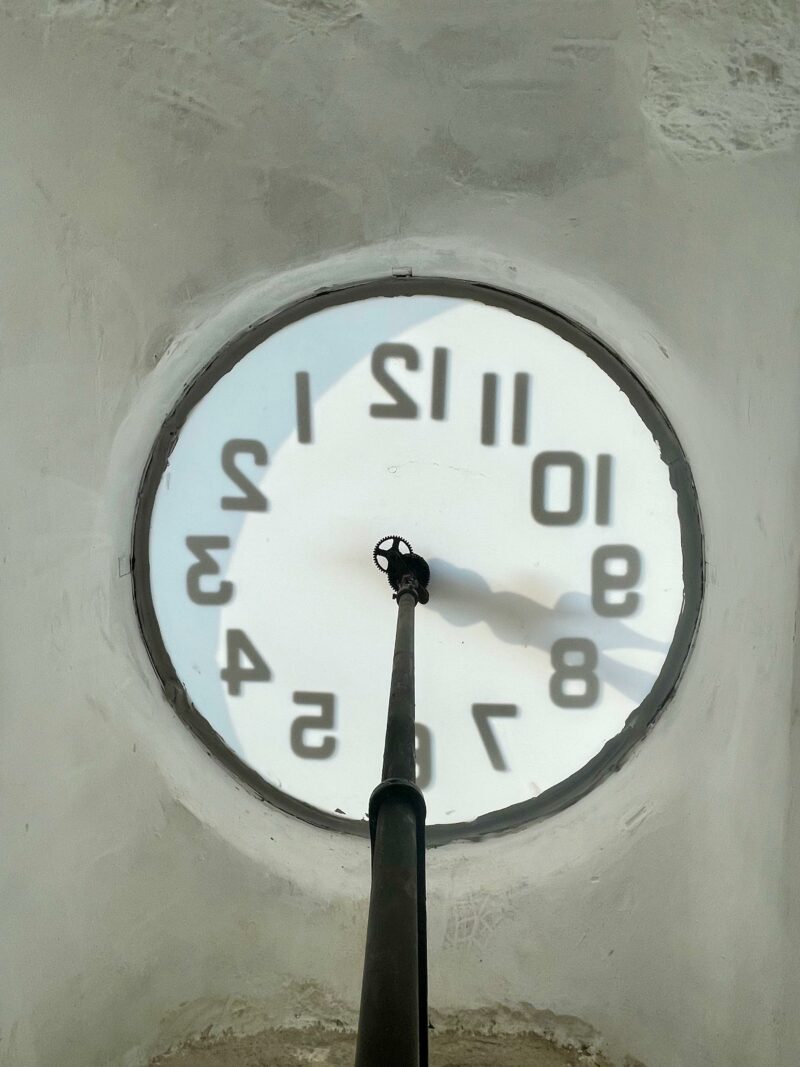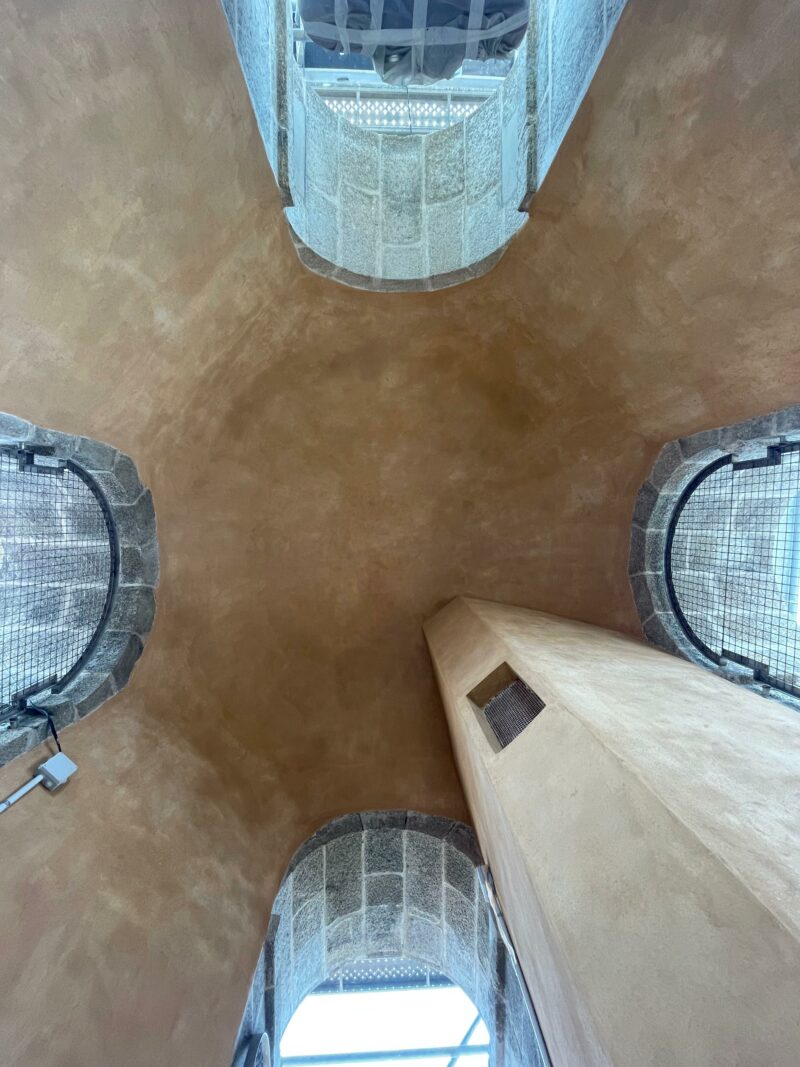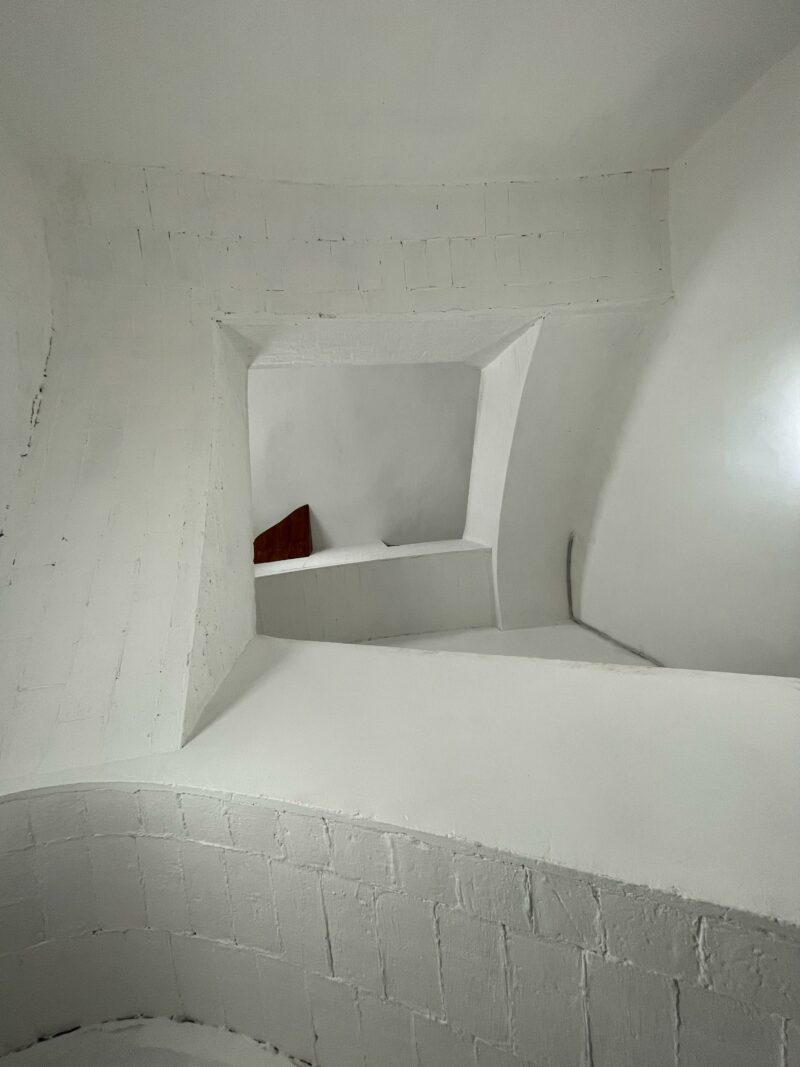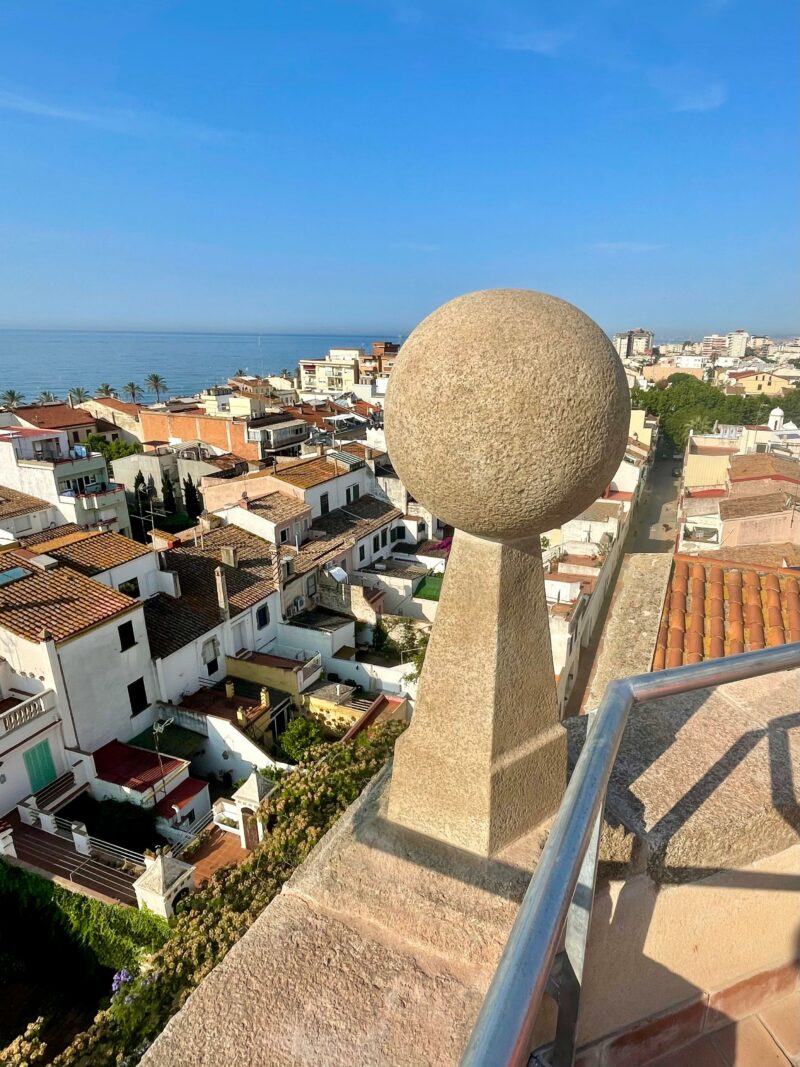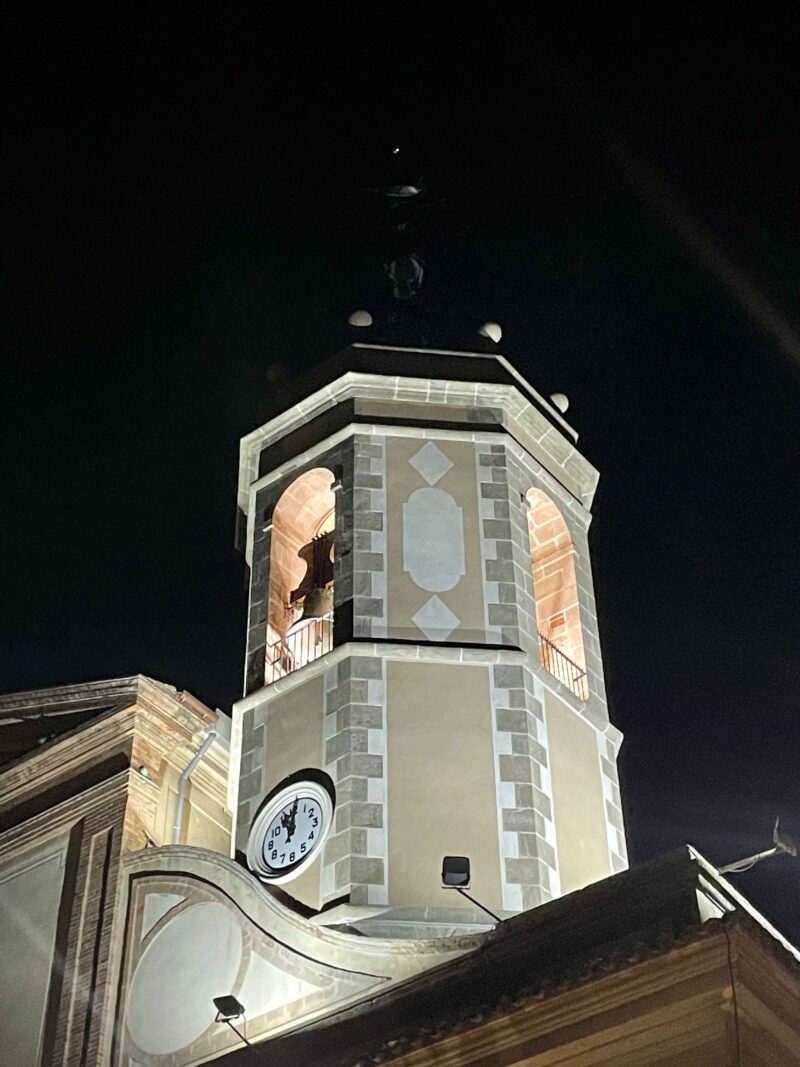GALLERY
Photographs of the Bell Tower from 2018 to the present



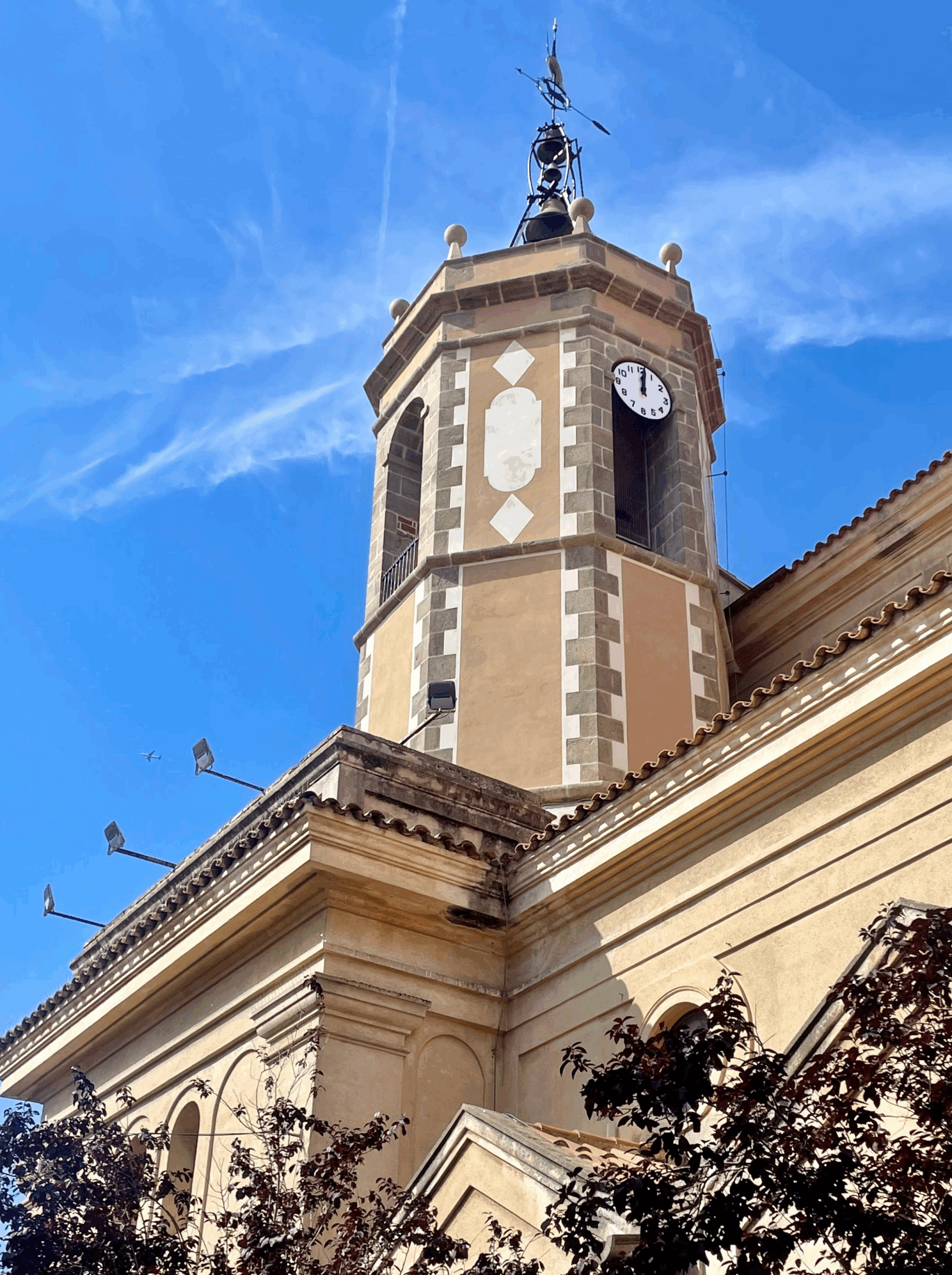
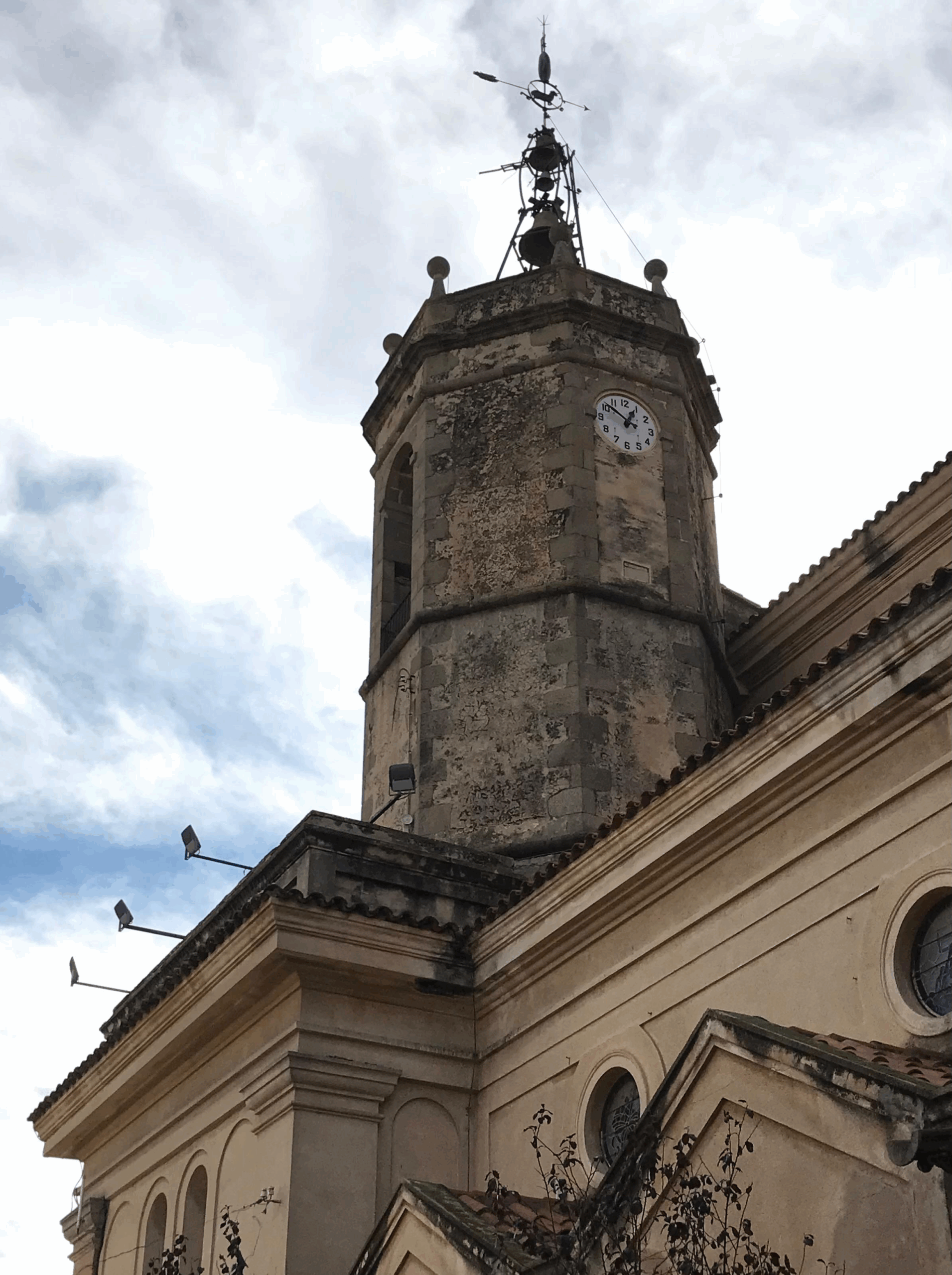
In the historic center of Vilassar de Mar, on a rectangular plot surrounded by Sant Joan, Santa Isabel, Montserrat streets and the Church Square, stands the Church of Sant Joan, an emblematic building that preserves as its main feature the original 18th-century Baroque bell tower, recently declared a BCIL (Local Cultural Heritage Asset).
This comprehensive rehabilitation and consolidation project has made it possible to preserve a fundamental element of Vilassar’s heritage that was in an advanced state of decay and posed a real safety risk. As early as October 2018, the situation had required the installation of a temporary mesh to prevent pieces of granite from the cornices and upper ornaments from falling.
The bell tower is organized into four levels, with a square base hidden beneath the main nave of the modern church, and an upper octagonal section emerging above the roof. Through an interior staircase, unique spaces are connected, such as the clock room, the liturgical bell floor and the accessible roof, where an eight-meter-high wrought-iron structure rises to support the hourly bells and is crowned with a weather vane, featuring a restored lute and a new certified lightning rod.
The rehabilitation was structured from the outside in, starting with the assembly of a 25-meter-high tubular scaffold that surrounded the bell tower for four months. A thorough cleaning of walls and organic remains was carried out, as well as the removal of unused metal elements. On the facades, all the exterior lime mortar plaster was chipped away to the original stonework, the joints were reinforced, and a new coating of lime mortar and traditional stucco with the original colors was applied, based on an in-situ chromatic study.
A key part of the project was the recovery of the historical sgraffito on the four opaque sides of the upper level. With the help of the Centre d’Estudis Vilassarencs and Mr. Alexis Serrano, they were recreated using old photographs and templates that ensured accuracy.
The set of granite ornamental elements —cornices, pilasters and spheres— was in very poor condition. Some pieces were restored with carbon fiber reinforcement and repair mortar, while others, such as the eight upper pilasters with their respective spheres, were completely replaced. The railings and protective grilles of the windows were also restored, and a new perimeter railing was installed on the rooftop to ensure safety.
The roof, which suffered from serious humidity problems, was waterproofed and repaved, forming adequate slopes and replacing the access cover with a skylight. The upper metal structure was completely restored, including the weather vane and decorative lute, which was rebuilt following the original proportions and incorporating pollacra-type, mainsail and mizzen sails, now made of stainless steel thanks to the collaboration with the Bricbarca association and Dr. Agustí Martín i Mallofré.
Inside, significant cracks in the walls and floors were repaired, wooden staircase sections affected by woodworm were replaced, and the finishes were restored with lime mortar plaster and silicate paint. Lighting was also significantly improved by adding more light points to facilitate both maintenance and interior visits.
The entire electrical installation was completely renewed, emergency lights and fire protection systems were added, and safety conditions were reinforced with railings and protections at all levels.
Another highlight is the restoration of the Great Bell —the Joana Vicenta Enrica—, the only surviving liturgical bell, which can now ring manually again on special occasions thanks to the replacement of the metal yoke with an ipe wood one. The mechanisms and supports of the hourly bells were also restored, as well as the dials of the two clocks visible from the town.
Finally, the original window on the mountain side, bricked up since the Civil War, has been recovered, improving ventilation and architectural expression. Unused structures were also removed and the original 1933 clock machinery was relocated into a former bricked-up opening, where it can now be visited as part of the preserved historical heritage of the bell tower.
This project has been essential to ensure the survival of the bell tower as an identity symbol of Vilassar de Mar and to enable, with complete safety, the continuation of traditional events linked to the Festa Major, such as the Flama del Canigó and the hanging of the Ase Innocenci.
